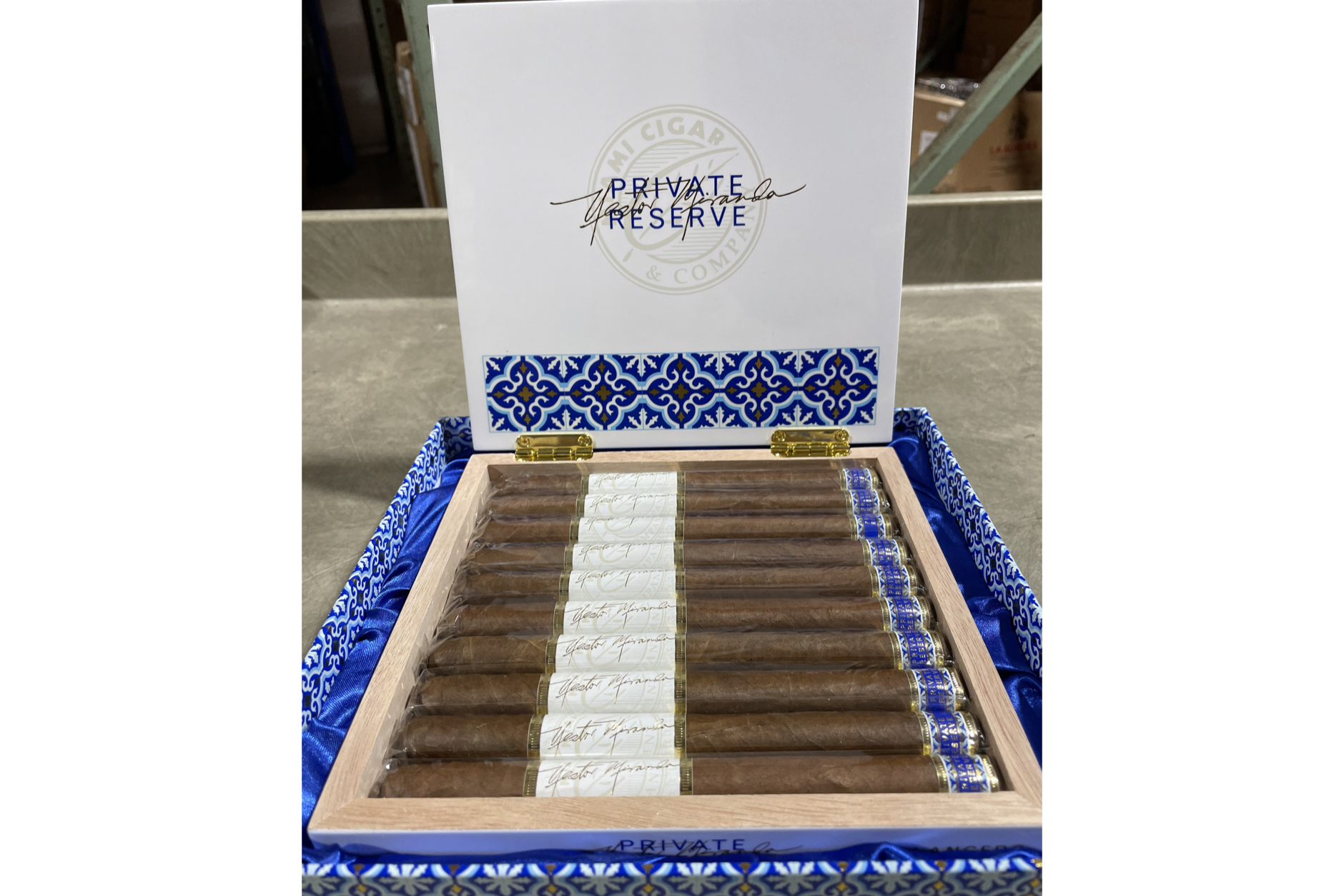Nestor Miranda of Miami Cigar & Co. has never shied away from putting his name on cigars; in fact, for as long as I’ve been covering the industry there has been a cigar with his name on it.
For the latest cigar to bear the Nestor Miranda name, the company has released a 6 3/4 x 40 lancero that kicks off the Nestor Miranda Private Reserve, what the company says will be a series of blends and sizes selected by Miranda himself, all released in limited quantities.
The cigar uses a Dominican corojo wrapper, Nicaraguan criollo 98 binder and fillers from Brazil, the Dominican Republic and Nicaragua. Like a number of other Miami Cigar & Co. cigars, it is made at the La Aurora Cigar Factory in Santiago, Dominican Republic. 
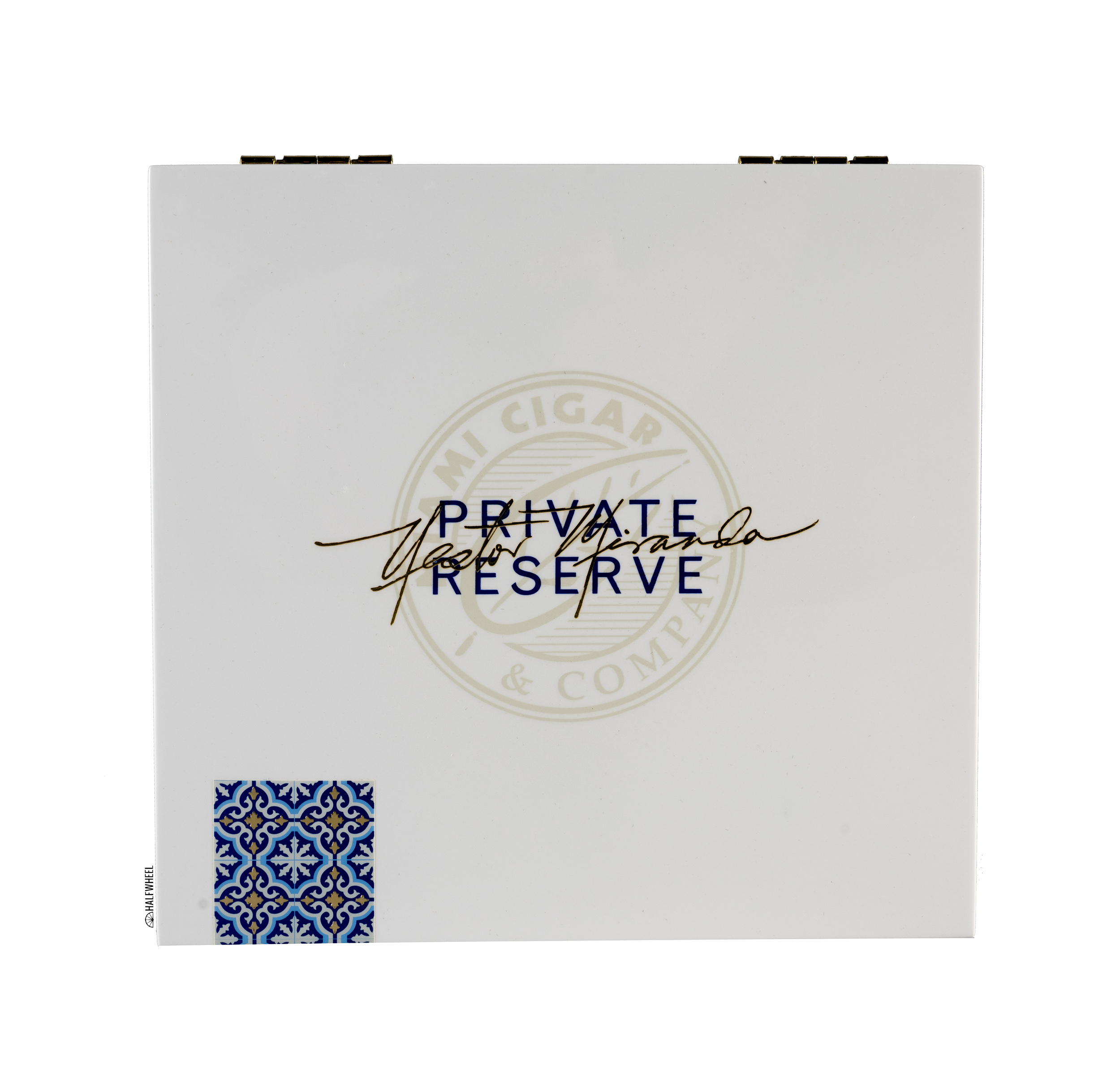
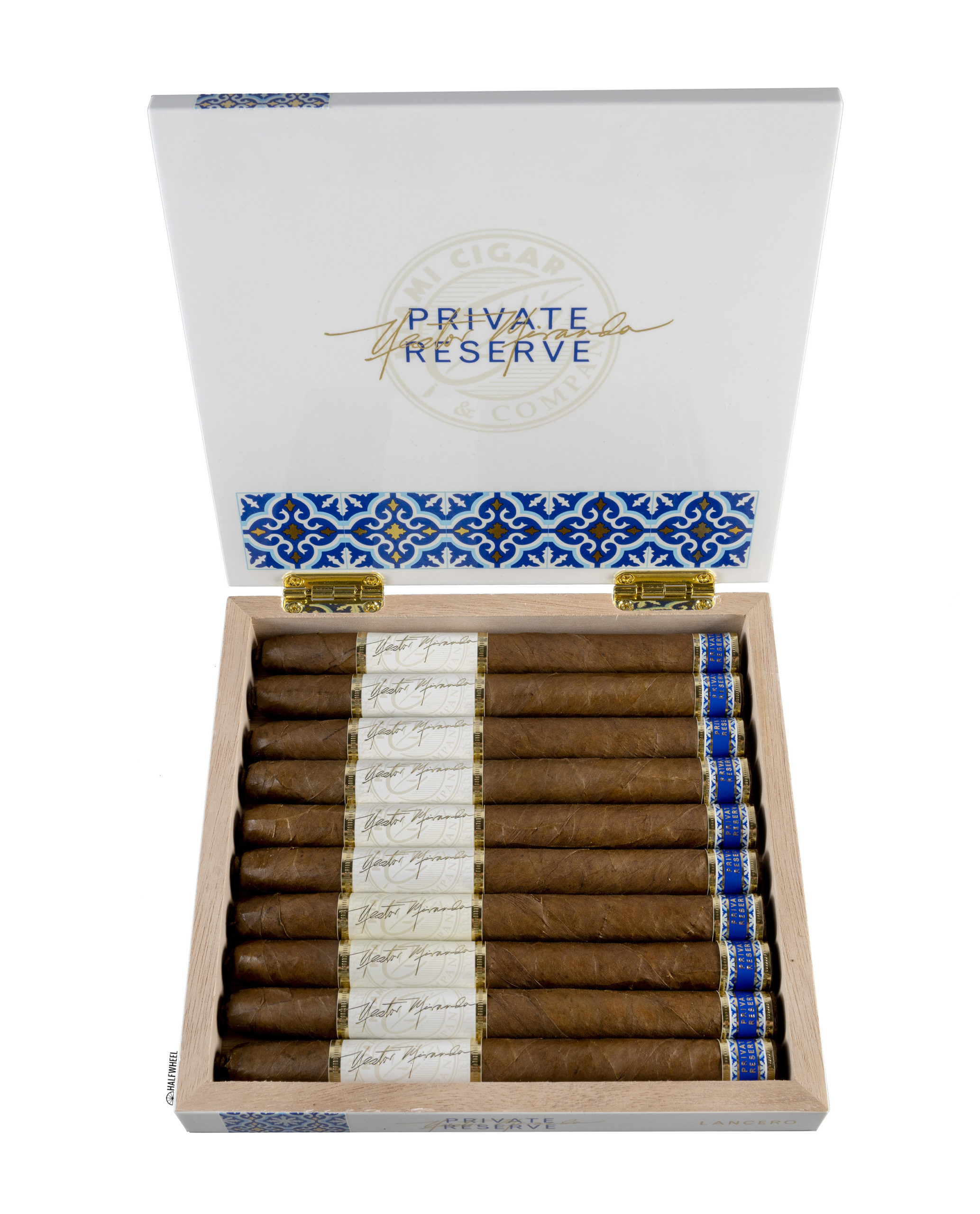

The cigars debuted at Cava Cigars in Miami on Feb. 26 and then started shipping to other retailers on March 1. Production is limited to just 500 boxes of 10 cigars, with each cigar having an MSRP of $18 before taxes.
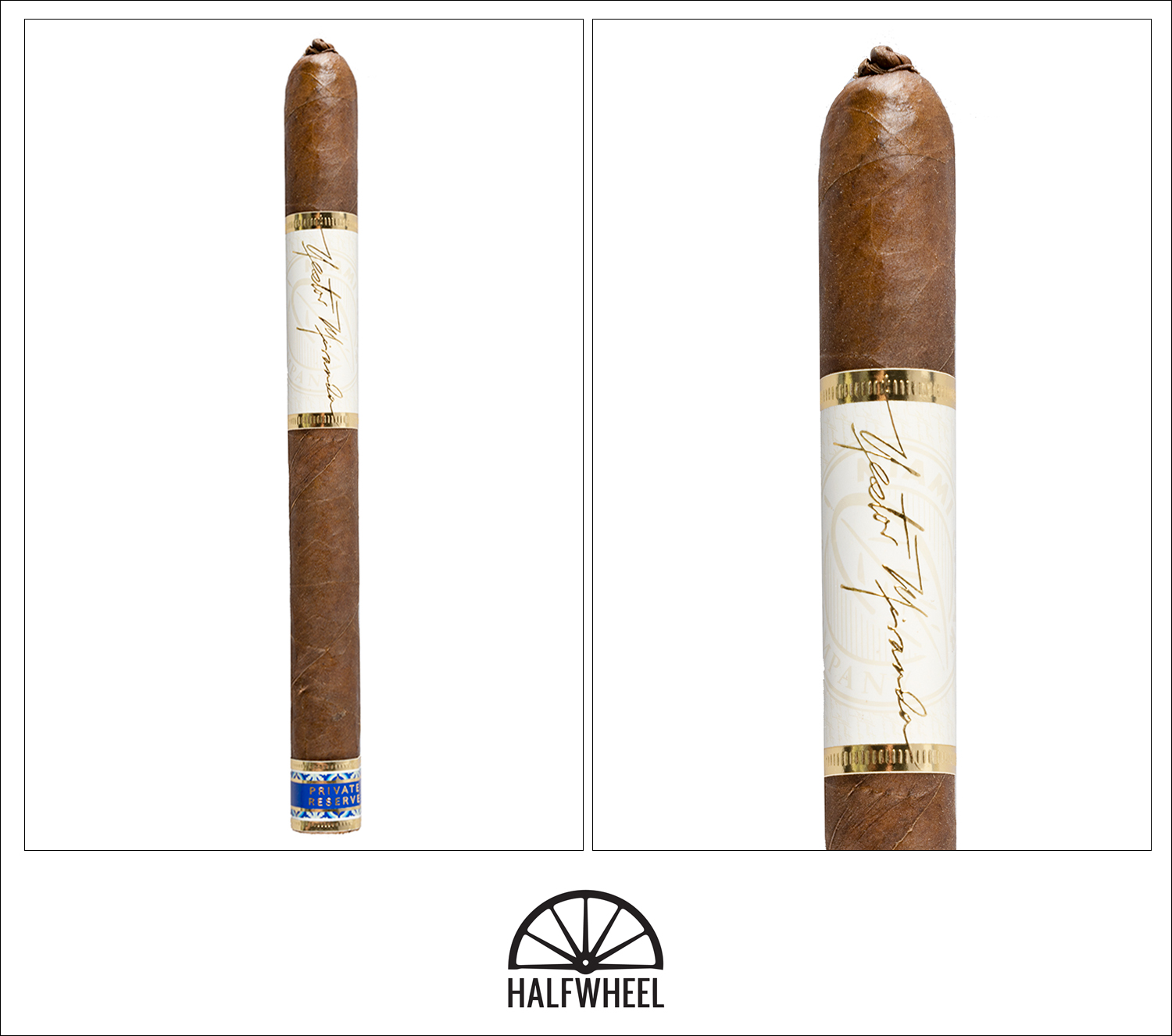
- Cigar Reviewed: Nestor Miranda Private Reserve Lancero
- Country of Origin: Dominican Republic
- Factory: La Aurora Cigar Factory
- Wrapper: Dominican Republic (Corojo)
- Binder: Nicaragua (Criollo 98)
- Filler: Brazil, Dominican Republic & Nicaragua
- Length: 6 3/4 Inches
- Ring Gauge: 40
- Vitola: Lancero
- MSRP: $18 (Box of 10, $180)
- Release Date: February 26, 2021
- Number of Cigars Released: 500 Boxes of 10 Cigars (5,000 Total Cigars)
- Number of Cigars Smoked For Review: 3
The Nestor Miranda Private Reserve Lancero is certainly dressed well, with a color scheme of royal blue, gold and cream. It’s hard not to notice the shiny edges of both bands, which shine as the light hits the shiny edges. The wrapper underneath isn’t quite as beautiful, at least not if you’re looking for something that is perfectly smooth. There are some fairly noticeable veins, some of which stand out along the seam lines as well, but it’s hardly enough that would stop me from picking up the cigar from a store shelf. The chocolate-colored wrapper has a smooth, slightly oily texture to it, though enjoying it means feeling those veins as well as looking at them. Those veins can also get a bit darker than the rest of the leaf, calling even more attention to them, while some leaves show some dark mottling in places. The cigar is rolled well, fairly firm in terms of density, and finished off with a small bun of a cap. Off the foot, I get aromas that remind me of a mocha coffee drink, leaning a bit more towards the warm chocolate aspect. It’s a mild, subtle aroma with just a bit of creamy sweetness and just a touch of appreciable pepper. Air moves smoothly on the cold draw, while the flavor is fairly similar to the aroma: a bit of chocolate and creaminess, neither of which are very forthcoming. There’s a bit of woodiness and bark here as well, with just a touch of pepper on the finish.
For not showing much pepper before being lit, the Nestor Miranda Private Reserve Lancero offers a pleasant hit of it on the first puffs. The flavors from the cold draw have been reversed, with a damp, bark-covered wood and a mix of white and black pepper leading the way, pushing the chocolate and cream sweetness into the follow-up notes. My first retrohales are also on the peppery side, not overpowering but robust with dry, almost scorched earth and black pepper. I wouldn’t call the first puffs out of harmony, but they get into better harmony by the one-inch mark, as the relative disparity in intensity shrinks and everything can play a bit more of a meaningful role. Baking spices begin to come in after the first two clumps of ash are knocked off, and are definitely more notable. By the time the cigar is well into this section—and in particular, when it’s not on the damp side—the profile is robust, woody with a hearty campfire note, fairly peppery, and flirting with touches of both earth and amber sweetness. The hearty smoke begins to thin out and the flavor lightens just a bit as the second third approaches, but so far the Nestor Miranda Private Reserve Lancero has offered a palate filling amount of flavor and aroma. Flavor intensity is medium-plus to near full, body is medium-plus, and strength is medium but building. Construction is generally very good, though two cigars feel slightly damp, leading me to dry box the final sample. Smoke production is generally good but abundant on that third cigar.
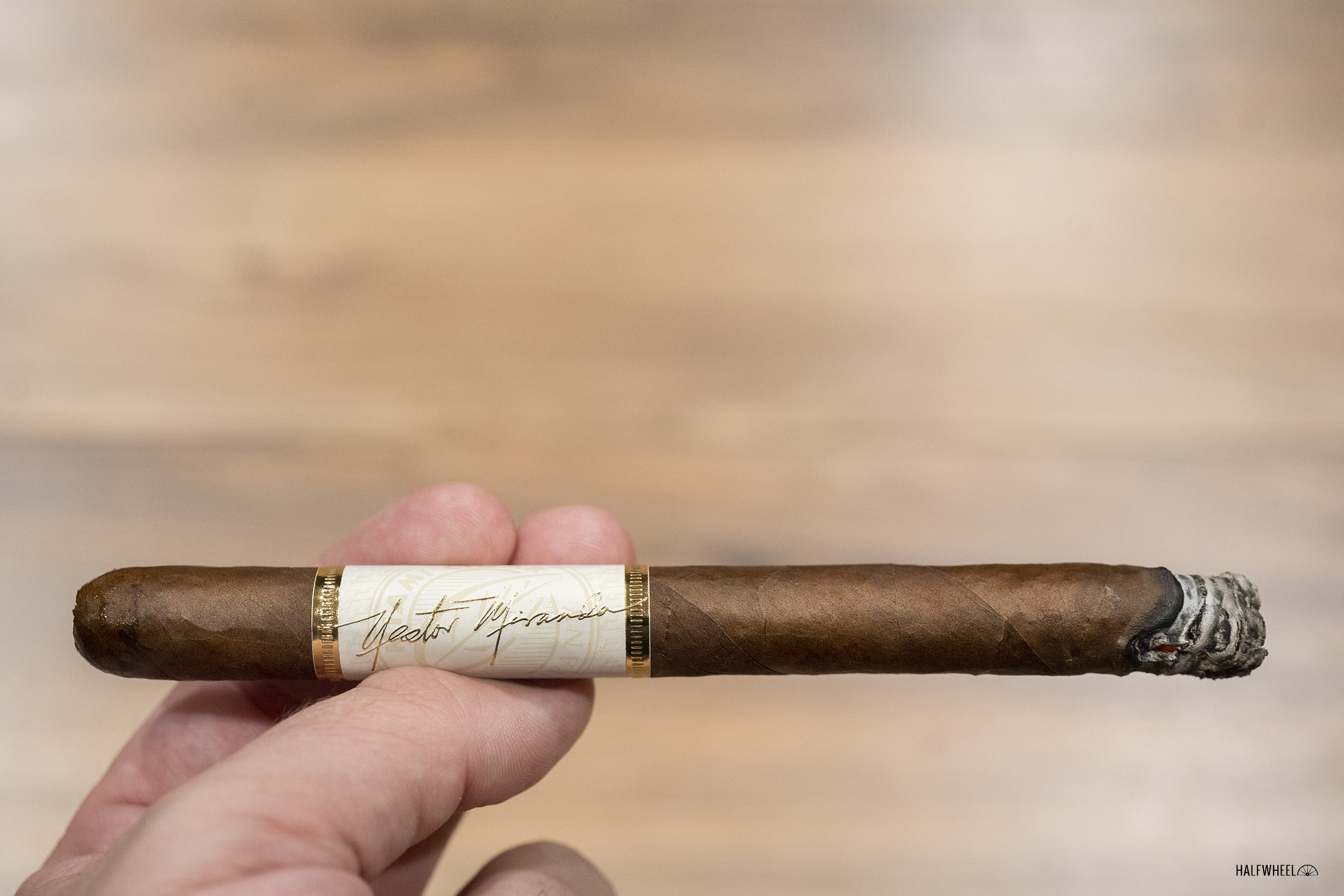
The cigar picks up a sweet, slightly oily nuttiness near the start of the second third, a change that immediately ups the complexity and balance of the profile, seemingly tying things together into a more cohesive profile than what the first third offered. I get a bit of chalk and white pepper through the nose, which continues the push towards a lighter overall profile, though the physical reaction to the smoke is no less enthusiastic. The profile takes another turn ahead of the midpoint, getting drier and woodier, while the finish is just a bit irritating with pepper. A retrohale at the midway point reveals a hearty amount of white pepper, while the back of the throat gets more of a black pepper scratch. The flavor begins to pick up a bit of chalk across the midway point, while the wood fades away and it begins to taste like a much drier, lighter expression of earth. The flavor isn’t as complex as it was in the first third, but it is no less flavorful on the palate, easily medium-full for the rest of this section. The body has dialed itself back and is now closer to medium, while strength is medium-plus and continuing to build slowly throughout the cigar. Also, the ash on two of the samples begins to flower fairly consistently in this section, though the cigar that gets the dry boxing doesn’t do that.
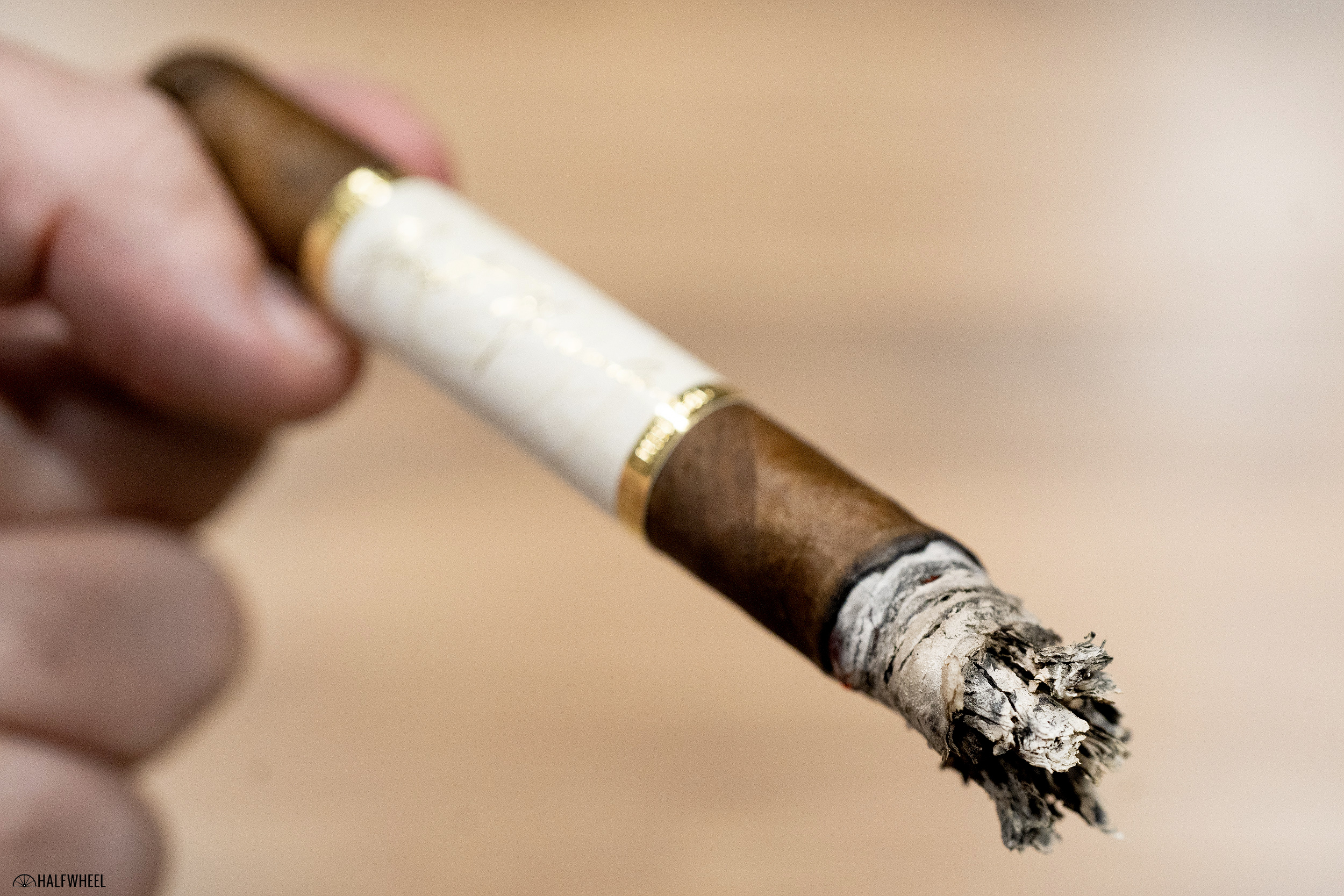
There’s a transition in flavors that happens just before what would be considered the physical beginning of the final third that seems about as good of a place to mark this section’s beginning. The woodiness is back but now much more of an oak flavor and aroma, and each puff reveals a gradual handing over of the reins from the chalk and white pepper. It’s also the first time in the cigar where I start to be able to pick out the individual types of tobacco, as the Dominican corojo and Nicaraguan criollo put just enough space between themselves to give the profile some definition. There is also a bit of bubblegum sweetness on the finish, an interesting development and a flavor that I have not tasted in a cigar in quite some time, something I’m inclined to attribute to the Brazilian tobacco in the blend. With the dry boxing, the construction is nearly flawless; without it, combustion issues are either occasional or persistent, leading to subsequent frustration and a seeming hampering of the flavor. Flavor and body finish medium-full and strength is now in the medium-full range.
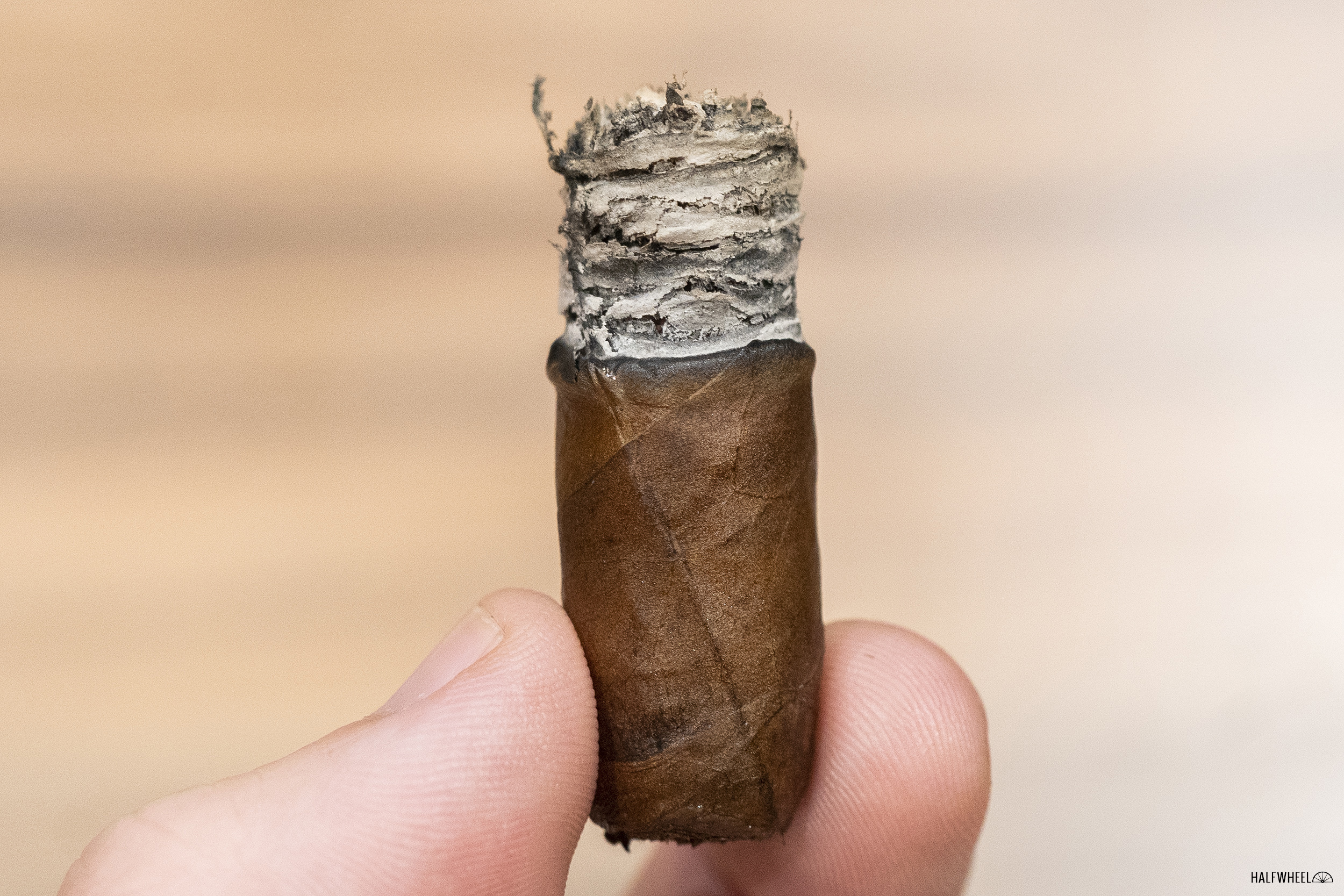
Final Notes
- As has been noted from time to time, there aren’t fixed dimensions for most cigar vitolas, meaning that you can have a lancero ranging from 6 to 7 1/2 inches, and usually with a 38 or 40 ring gauge.
- When talking about a traditional lancero, I know that I’d point to the Cuban Cohiba Lanceros, a 7 9/16 (192mm) x 38 vitola known as Laguito No.1.
- While it would likely be too much to remember, this is one of the things I like about the Cuban method of production, with each specific size having its own name.
- After smoking the second sample, I was a bit concerned that the third might be a bit damp. Combustion was problematic enough that I felt some dry boxing might help, as the cigar seemed much more prone to going out on its own than I would otherwise expect.
- Even though I hate basing things off a small sample size, it seemed like the dry boxing the final cigar paid immediate dividends, starting with the draw and smoke production. I didn’t think either was bad when it came to the first two samples, but the third’s was noticeably better.
- Miami Cigar & Co. advertises on halfwheel.
- The cigars for this review were purchased by halfwheel.
- The Nestor Miranda Private Reserve Lancero has some sneaky nicotine strength to it, not really hitting me until a few minutes after I had finished the cigar and was moving around.
- Final smoking time was two hours on average, with the first two closer to two hours and 20 minutes, and the third about one hour and 45 minutes.
As has been noted many times before, it’s amazing what smoking a cigar at the right humidity and without burn issues can produce. While I didn’t think the first two cigars were by any means bad, it was clear by the second cigar that there were some combustion issues holding things back. A few hours out of the humidor did just the trick, letting the cigar rid itself of just enough humidity to allow the flavor to open up and show its full vibrance. It’s a big, nearly full-flavored cigar with plenty of body and smoke, as well a surprising amount of strength that sticks around even after the cigar is out and the ashtray has been emptied. Smoking the cigar at a more ideal relative humidity shows the cigar should have a couple of good years ahead of it to mellow it into an even more harmonious blend, but rest assured that if you smoke it now, you and your palate will have plenty to enjoy.

